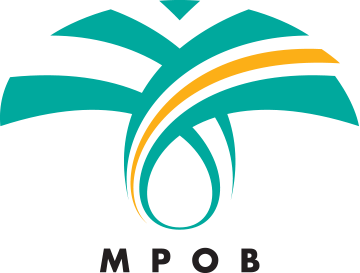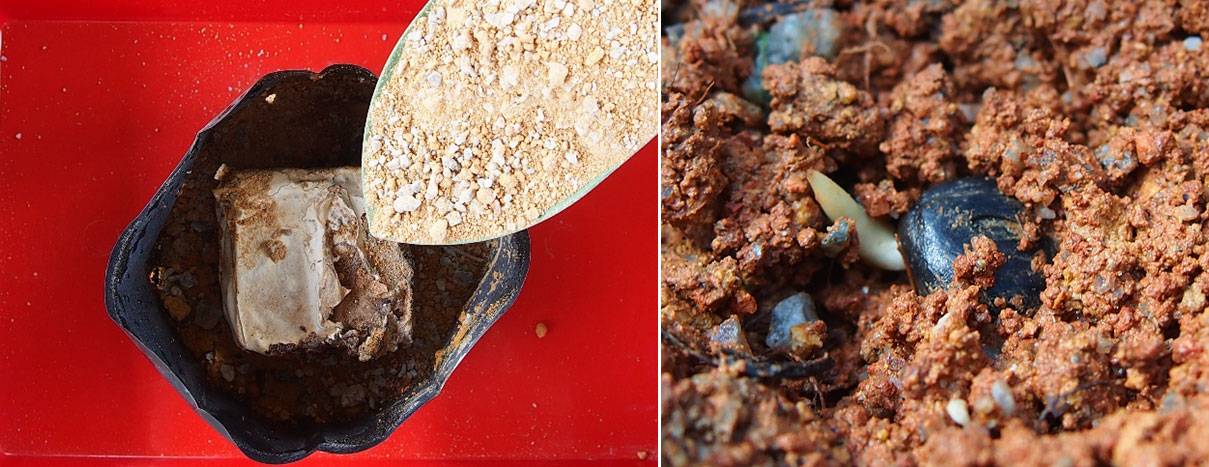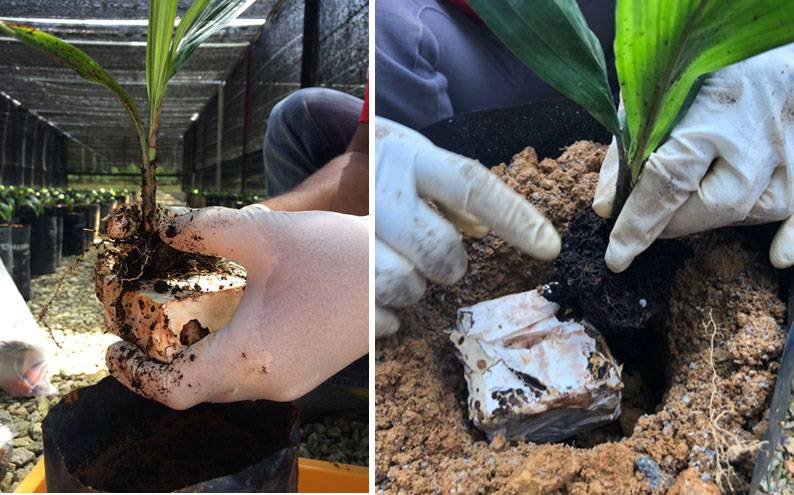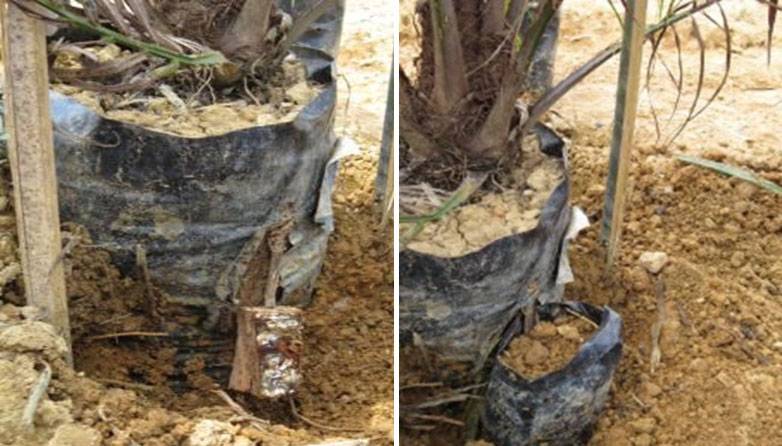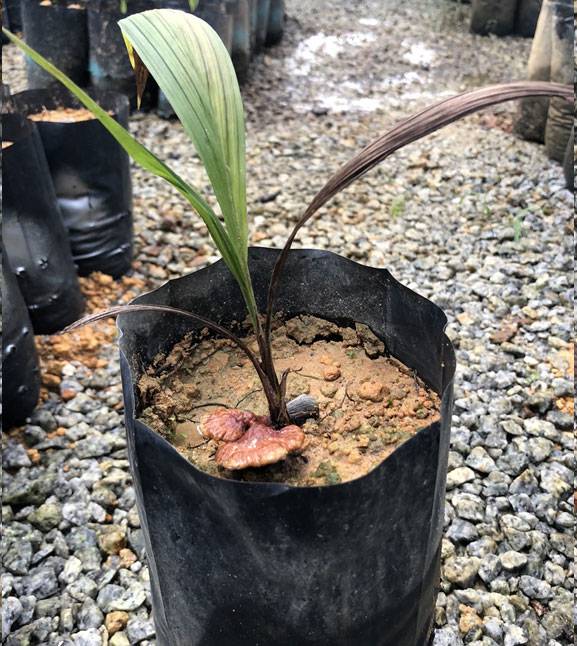Pathogenicity test
The pathogenicity test for Ganoderma fungus on oil palm was developed by artificially inoculating seeds and clonal materials with Ganoderma colonized rubber wood block.
These techniques showed that the Ganoderma penetrated into the root, finally reaching the bole/stem base and causing typical symptoms of BSR, hence confirming Koch’s postulates. The presence of Ganoderma is confirmed using the GSM or molecular methods such as polymerase chain reaction (PCR).
There are several Ganoderma pathogenicity tests which can be used, as follows:
3
Root inoculation technique
The technique involves withdrawal of primary root through slit made in a polybag containing the oil palm seedling (>10 months old). The two primary roots exposed are then pulled through the opening and then washed with water to remove the adhering soil.
Approximately, 3-5 cm of the root is inserted into a RWB colonised with Ganoderma inoculum. At monthly intervals, the following external parameters are recorded: disease incidence, disease severity index of foliar symptoms and dead seedling.
By the end of the experiment, destructive sampling is carried out to examine the following internal symptoms: disease severity index of bole/roots, infected roots and infected bole/stem.
